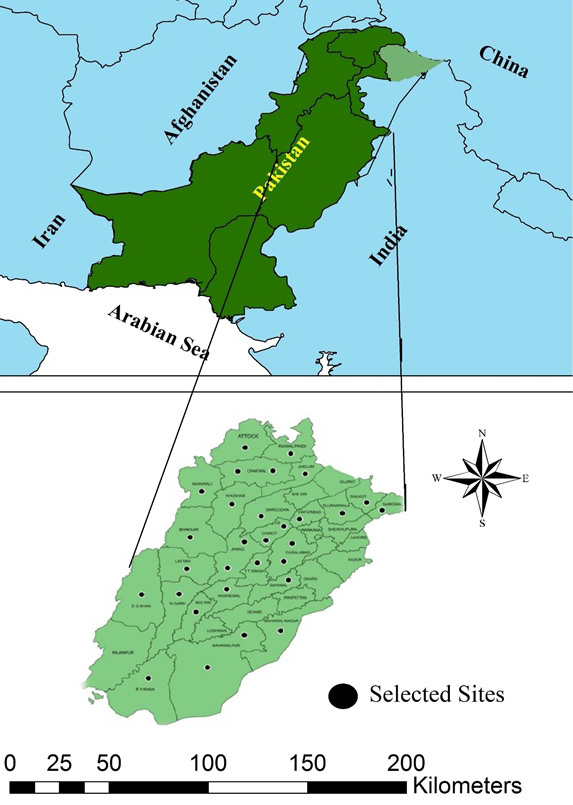Identification of Influencing Factors for Optimal Adoptability of High Efficiency Irrigation System (HEIS) in Punjab, Pakistan
Identification of Influencing Factors for Optimal Adoptability of High Efficiency Irrigation System (HEIS) in Punjab, Pakistan
Hafiz Umar Farid1, Muhammad Zubair2, Zahid Mahmood Khan1, Aamir Shakoor1*, Behzad Mustafa1, Aftab Ahmad Khan3, Muhamad Naveed Anjum4, Ijaz Ahmad5 and Muhammad Mubeen6
Location of selected HEIS sites dispersed across all Punjab.
Distribution of farmer demographics by HEIS adoption (a = Farmers experience; b = Farmers qualification; c = Farmers land holding; d = Location of farm; e = Farming practice; f = Tenancy status).
Distribution of Farm Characteristics by HEIS adoption (a = Soil Type; b =; GW quality; c = Available Water Sources; d = HEIS type; e = Crop type under HEIS; f = Age of HEIS; g = Mode of power; h = Pumping mechanism).
Significant factors influencing the sustenance of HEIS.
Net economic benefits (PKR/ha) for all 30 sites (F: Functional N: Non Functional S: Site).
Correlation Matrix for selected parameters.















